Tapanuli orangutan facts, pictures and information. Find out about the newly-discovered member of the great ape family …
Tapanuli Orangutan Facts at a Glance
- Scientific name: Pongo tapanuliensis
- Type of Animal: Mammal
- Order: Primates
- Animal Family: Hominidae (the great ape family)
- Where Found: Sumatra
- Height: male: 1.4 m (4.6 ft.); female 0.9 m (3.0 ft.)
- Weight: male: 90 kg (200 lb.); female 45 kg (99 lb.)
- Conservation Status: Critically Endangered
Other interesting Tapanuli orangutan facts
- The Tapanuli orangutan was only recognized as a separate species in 2017
- The Tapanuli orangutan is the third orangutan species to be recognized.
Page Index
Go straight to the information you need using the menu below:
- Introduction & Discovery
- Orangutan Species
- What does the Tapanuli orangutan look like?
- Orangutan Evolution
- Where Is The Tapanuli Orangutan Found?
- Tapanuli Orangutan Habitat
- Tapanuli Orangutan Behavior & Lifestyle
- Tapanuli Orangutan Reproduction
- Tapanuli Orangutan Predators
- Tapanuli Orangutan Threats
- Orangutan Intelligence
- The 8 Members Of The Great Ape Family
- How Closely Related Are Orangutans To Humans?
Introduction: Meet the Tapanuli Orangutan
Orangutans are large, tree-dwelling apes with distinctive red hair and long, powerful limbs. They live in the forests of the Southeast Asian islands of Sumatra and Borneo. Despite their large size, orangutans are expert climbers and spend more time in the trees than any other primate.
Discovery of a New Species of Orangutan
In 1997, an isolated group of orangutans was discovered living deep in the rainforests of north Sumatra. They were originally thought to be a separate population of Sumatran orangutans.
At the time only two species of Orangutan were recognized; the Sumatran orangutan, and its close relative the Bornean orangutan, which lives on the neighboring island of Borneo.
Subsequent research revealed that there were significant physical and behavioral differences between the isolated group and the other orangutans living on Sumatra.
In 2017, the population was recognized as being a separate species. The species was given the name Tapanuli orangutan, after the region in which it was discovered.
The discovery brings the number of recognized orangutan species to three, and the number of species in Hominidae – the great ape family – to eight (including humans!).
All orangutans have been badly affected by deforestation and are now critically endangered. (Deforestation is when forests are destroyed so that the land can be used for other purposes.) Much of the orangutan’s natural home has been cleared to make way for palm oil plantations.
Because there are fewer than 800 Tapanuli orangutans in the wild, the species was instantly given Critically Endangered status. The Tapanuli orangutan is considered to be among the most endangered of all primates.
Orangutan Species
It was only in 1996 that scientists announced that what had originally been considered as one species – the orangutan – was actually two species: the Bornean orangutan and the Sumatran orangutan.
Prior to this, the Sumatran orangutan was considered to be a subspecies of the Bornean orangutan.
(A species is divided into subspecies when it has two or more separate groups, and the members of each group can be distinguished from those of another group by differences in appearance or behavior.)
The discovery of the Tapanuli orangutan brings the total number of orangutans up to three:
List of Orangutan Species with Scientific Names
- Bornean orangutan Pongo pygmaeus
- Sumatran orangutan Pongo abelii
- Tapanuli orangutan Pongo tapanuliensis
Male Bornean, Sumatran and Tapanuli Orangutans
What Does The Tapanuli Orangutan Look Like?
Of all the great apes, orangutans spend the greatest amount of time in the trees. Despite being the second-largest primates (after the two gorilla species), orangutans are excellent climbers, and have many adaptations for life in the trees.
The Tapanuli orangutan, like all orangutans, has opposable thumbs on both its hands and feet. This means that is able to use its feet, as well as its hands, to hold onto branches. Its hip joints are as flexible as its shoulders, and its hands are adapted to be able to maintain a firm grip on a branch with minimal effort.
The Tapanuli orangutan more closely resembles the Sumatran orangutan than it does the Bornean orangutan. Its fur is paler and longer than that of a Bornean orangutan, and frizzier than that of a Sumatran orangutan.
Male Tapanuli orangutans are significantly larger than females. Mature males develop ‘cheek flanges’. These are fleshy projections that surround the face. They are made of fatty material and signify the older orangutan’s dominance over younger males.
The cheek pads of male Tapanuli orangutans are flatter than those of other orangutans, and are covered in downy blonde hair. Males also have long moustaches. Female Tapanuli orangutans have beards, whereas female Bornean orangutans don’t.
The Tapanuli orangutan’s skull and jawbones are less robust than those of other orangutans, and the skull is smaller.
The differences between the Tapanuli orangutan and other orangutans are not just physical: the call of a male Tapanuli orangutan is higher in pitch than that of a Sumatran orangutan, and longer and more ‘pulsed’ than that of the Bornean orangutan.
There are differences in the Tapanuli orangutan’s diet, too. The species enjoys caterpillars and conifer cones that aren’t eaten by the other species.
Orangutan Evolution
The islands of Sumatra and Borneo once formed part of a larger landmass called Sundaland. As the sea level rose, the islands became cut off from one another.
It is thought that Tapanuli orangutans are the direct descendants of the orangutans that originally made their way onto Sundaland from mainland Asia.
Sumatran orangutans split from Tapanuli orangutans around 3.4 million years ago. Bornean and Tapanuli orangutans split much later, around 674,000 years ago. This means that, despite looking more like a Sumatran orangutan, the Tapanuli orangutan is actually more closely related to the Bornean species.
Where Is The Tapanuli Orangutan Found?
The Tapanuli orangutan is found in Sumatra. Sumatra is a large island located in the Indian Ocean. It part of the island country of Indonesia.
The Tapanuli orangutan lives in the forests of the Central, North and South Tapanuli Districts of north Sumatra. The area in which it is found covers just 1,000 km2 (386 sq. mi.), and is located south of Lake Toba.
Use the interactive map of Sumatra below to zoom in and find these locations.
Sumatra’s other orangutan species, the Sumatran orangutan, is found north of Lake Toba.
Although the species split over 3 million years ago, there was contact between them until sometime between 10,000 and 20,000 years ago. Today this is impossible due to habitat loss.
There are three isolated populations of Tapanuli orangutan. One of the key challenges faced by conservationists is to enable movement between the three groups.
Tapanuli Orangutan Habitat
The Tapanuli orangutan lives in tropical rainforests. It is found in hilly terrain and on the foothills of mountains. Tapanuli orangutans are most commonly found in areas of primary forest (i.e. original forest, rather than forest that has been planted or disturbed). They can also be found in agroforest – forest that has been grown near crops.
Tapanuli Orangutan Behavior & Lifestyle
Orangutans are the most arboreal (tree-dwelling) of the great apes. Orangutans in Sumatra spend even more time in the trees than their Bornean cousins due to the presence of the Sumatran tiger (itself a critically endangered animal).
Orangutans are the least social of the great apes. Females are more social than males, and may tolerate other related females living nearby. Whereas females tend to stay in the same area in which they are born, males travel much more widely.
Male orangutans only settle down and stay in one place when they are powerful enough to take over the territory of a resident dominant male. Male orangutans only develop their distinctive cheek flanges when there is no dominant male present.
The Tapanuli orangutan’s day is spent foraging for food and resting. Its diet includes fruit, other plant matter, insects, honey and bird eggs. It may also take small mammals such as slow lorises.
Reproduction
Orangutans don’t reproduce until they are relatively old – around 10 to 15 for females and 15 to 20 for males. Pregnancy lasts for 9 months, and a female won’t produce another child for 6 to 8 years after giving birth.
This extremely slow rate of reproduction makes an orangutan population susceptible to hunting pressure. Orangutan numbers can’t just ‘bounce back’ after a period of exploitation.
Tapanuli Orangutan Predators
A full-grown Tapanuli orangutan is a large animal and has few natural predators. Only Sumatran tigers (shown above), clouded leopards, Sumatran dholes (wild dogs) and crocodiles pose a threat.
Tapanuli Orangutan Threats
The Tapanuli orangutan faces a number of threats. Its critically endangered status is largely due to habitat loss and hunting. An immediate threat is a proposed hydroelectric development, which could affect 8% of the orangutan’s habitat.
Orangutan Intelligence
Orangutans are among the most intelligent primates. They have been taught sign language, and can copy human behavior when kept in captivity (for example, orangutans learned to use a saw after watching builders at work).
In the wild, orangutans have been observed using tools. Orangutans create and use tools for different purposes. Sticks are adapted to extract insects from hollow trees, and to extract seeds from hard-skinned fruit. Leaves are used as cups to hold water. Orangutans have also been seen carrying leaves to protect themselves from the rain.
The Great Ape Family
Orangutans, like humans, are hominids – members of the family Hominidae, also called the ‘great ape’ family. The discovery of a third orangutan species meant that there are now eight living great ape species.
Chart of Extant (Living) Species in the Family Hominidae (The Great Apes)
| English Name | Scientific Name | Genus |
|---|---|---|
| Bornean orangutan | Pongo pygmaeus | Pongo |
| Sumatran orangutan | Pongo abelii | Pongo |
| Tapanuli orangutan | Pongo tapanuliensis | Pongo |
| Eastern gorilla | Gorilla beringei | Gorilla |
| Western gorilla | Gorilla gorilla | Gorilla |
| Common chimpanzee | Pan troglodytes | Pan |
| Bonobo | Pan paniscus | Pan |
| Man | Homo sapiens | Homo |
How Closely Related Are Orangutans To Humans?
Of all the members of the great ape family, orangutans are the least-closely related to humans. Despite this, they still share 97% of our DNA.
The animals that were the ancestors of both orangutans and humans (i.e. the species’ ‘latest common ancestor’) lived around 14 million years ago. (By comparison, the latest common ancestor of chimpanzees and humans lived between 4 and 7 million years ago.)
Tapanuli Orangutan Facts: Related Articles
- You can find out more about orangutans and their rainforest lifestyles here: Orangutan Facts
- Discover more amazing rainforest animals here: Rainforest Animals List
- Find out more about endangered animals here: Endangered Animals

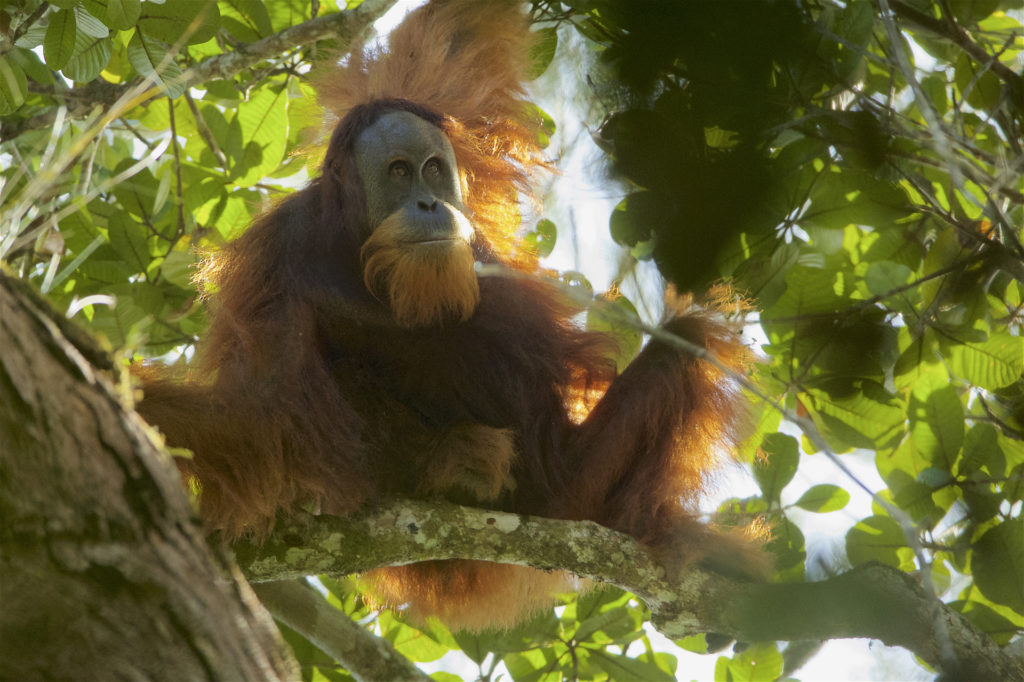
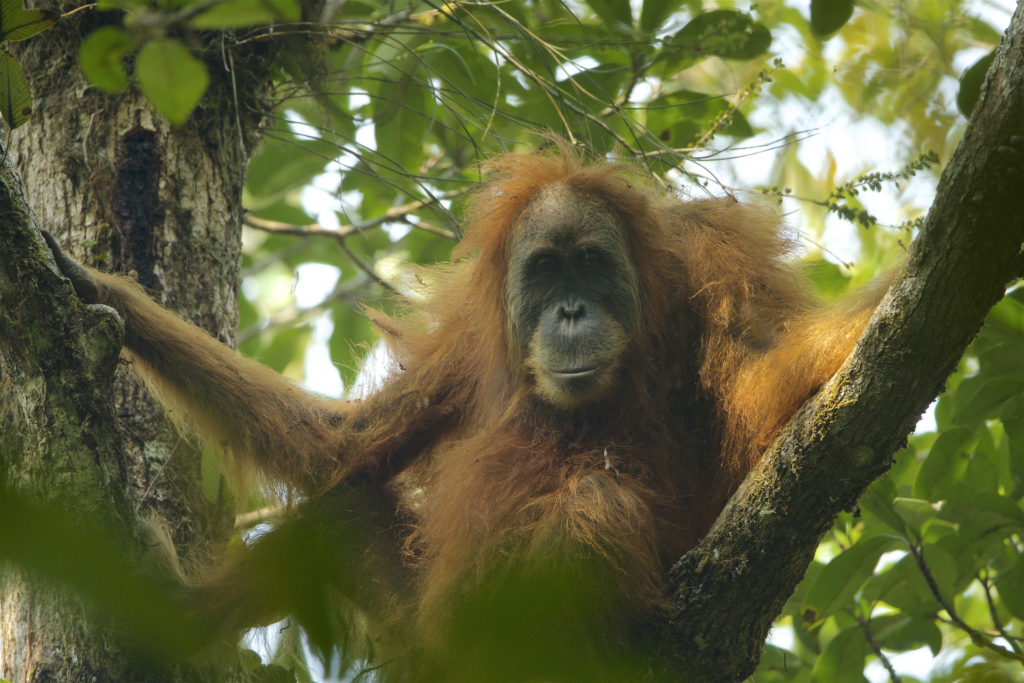
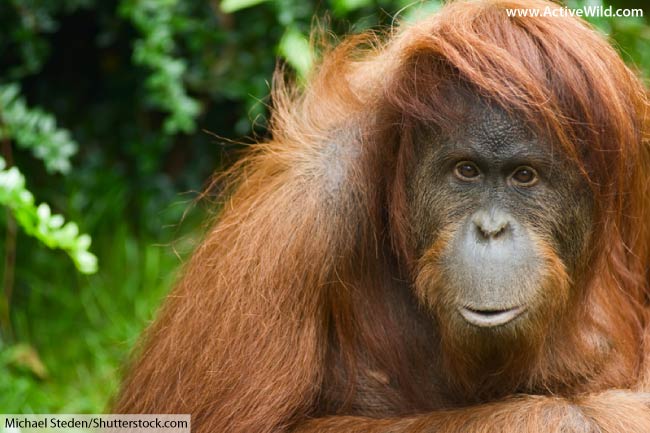

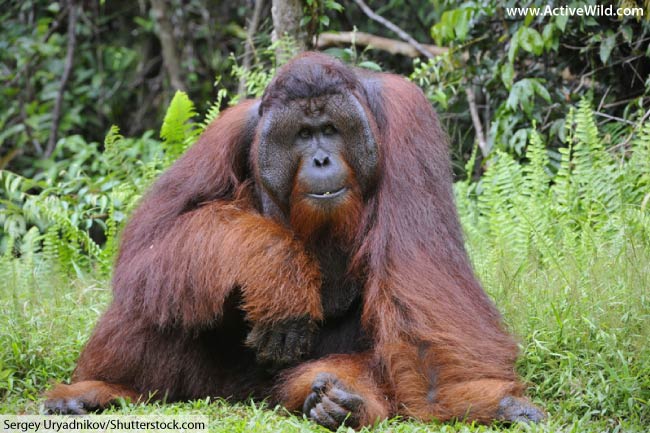
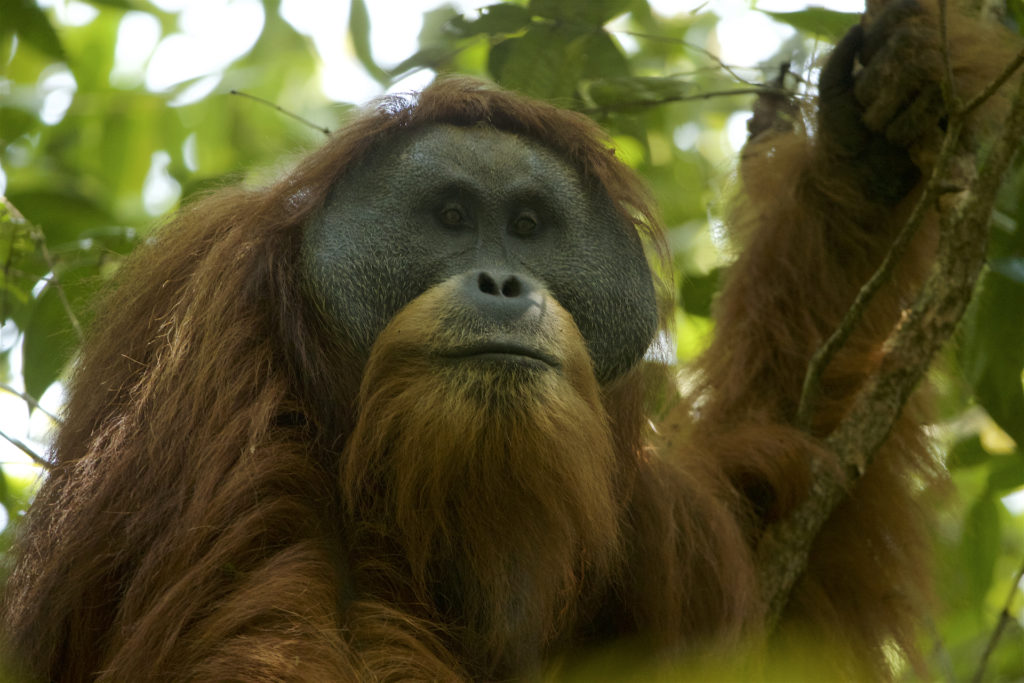


I’m at school right now! I also love the pointy hair!!!!
Yes, they’ve got awesome hair!
I love the hair!!!